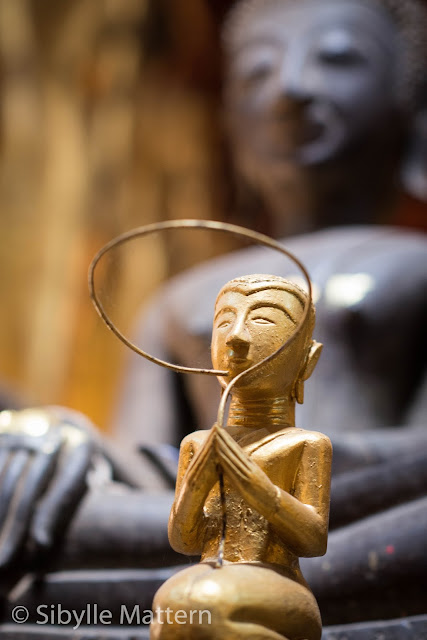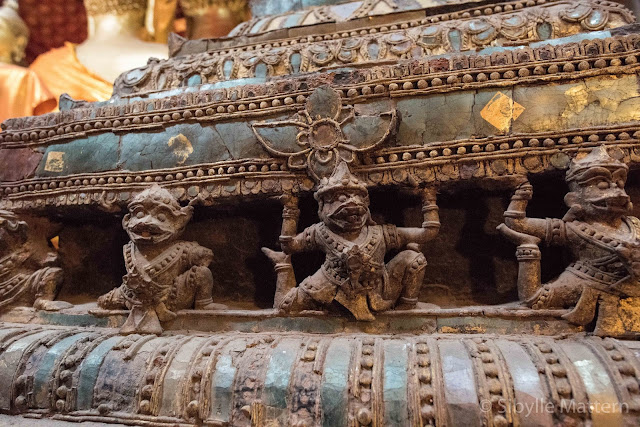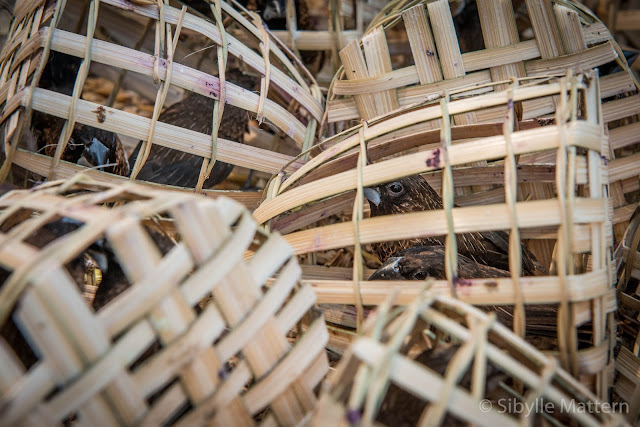At the foot of Mount Phousi lies the National Museum in the former Royal Palace where the Laotian Royal family lived until 1975.
Three-headed elephants and the cobra symbols , same as in neighboring Cambodia, in Angkor Wat.
Luang Prabang has many temples called Wats. Most are elaborately decorated with gold leaf, mosaics and carvings and house Buddha statues. The large and beautiful Wat Mai is next to the National Museum.
Wat Mai is centrally located and can be entered from the Night Market Road in the evening to watch and listen to the monks chanting. It is decorated with hundreds of Buddha statues.
a beloved head monk in gold
There were 20 Wats on our map. Slowly wandering through the streets of the town, one comes across many more small temples in hidden corners. The town occupies a small area, easily negotiably on foot, probably no more than a square kilometer.
Buddha can be female.
Under the golden ashoka tree
a depiction of hell ...
the Tree of Life
A couple in formal wedding dress paid their homage at a temple.
Luang Prabang is famous for its alms giving ceremony. Early in the morning at 5.30 a.m. the monks leave the monasteries to go out and collect alms. They walk through the streets silently - watched and photographed by hordes of tourists like myself - and collect their breakfast and lunch in large bowls. Locals, but also many tourists, sit on the sidewalks with little bits of sticky rice and other stuff, that they place in the proffered bowls. It is a strange custom - imagine you have to eat bits of cold sticky rice that dozens of hands have touched. I have seen Chinese tourists putting small parcels still wrapped in plastic with instant noodle soup into the bowls...



















































